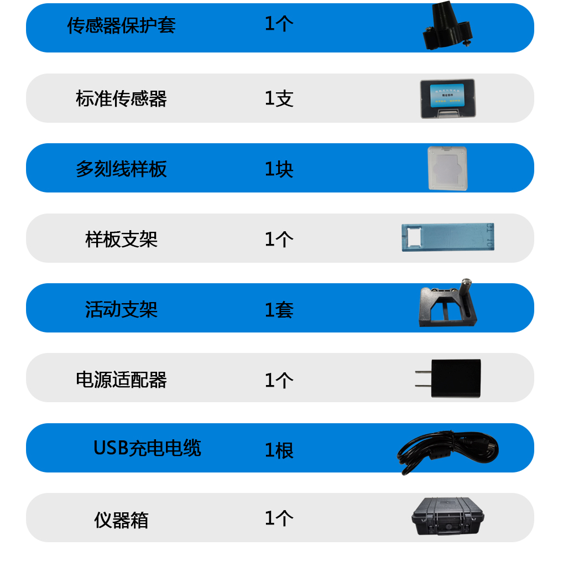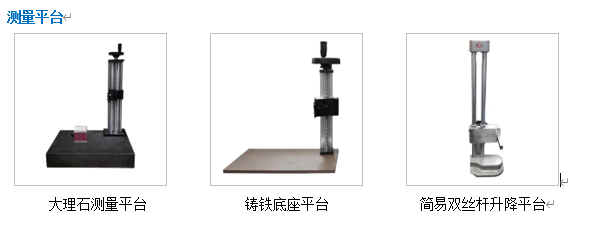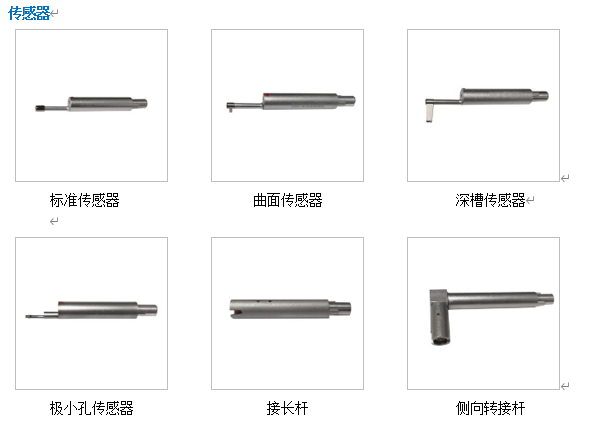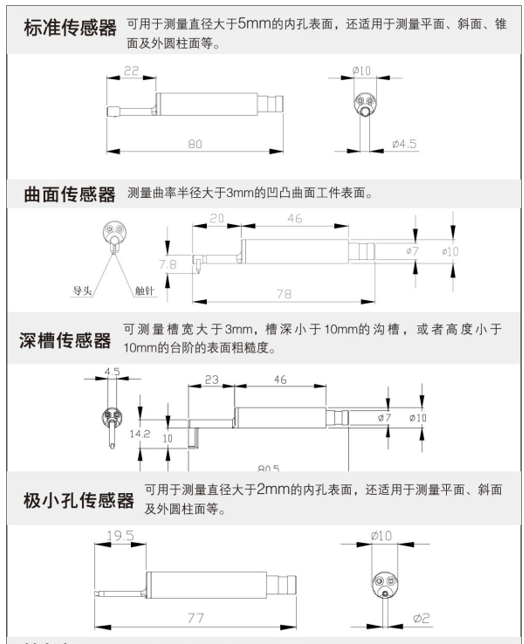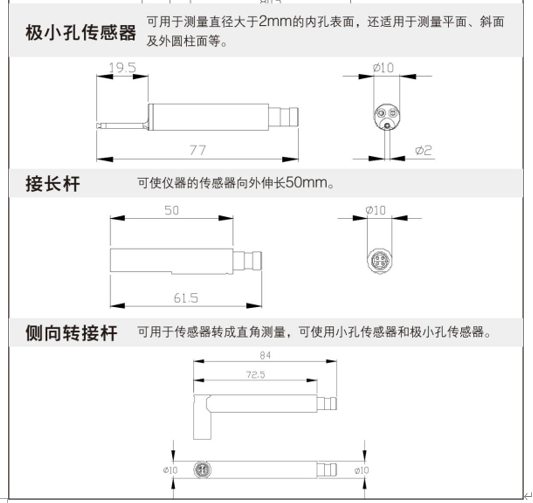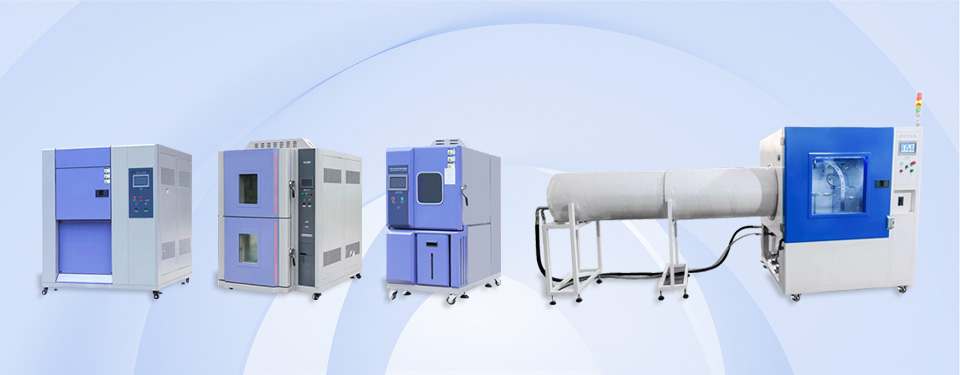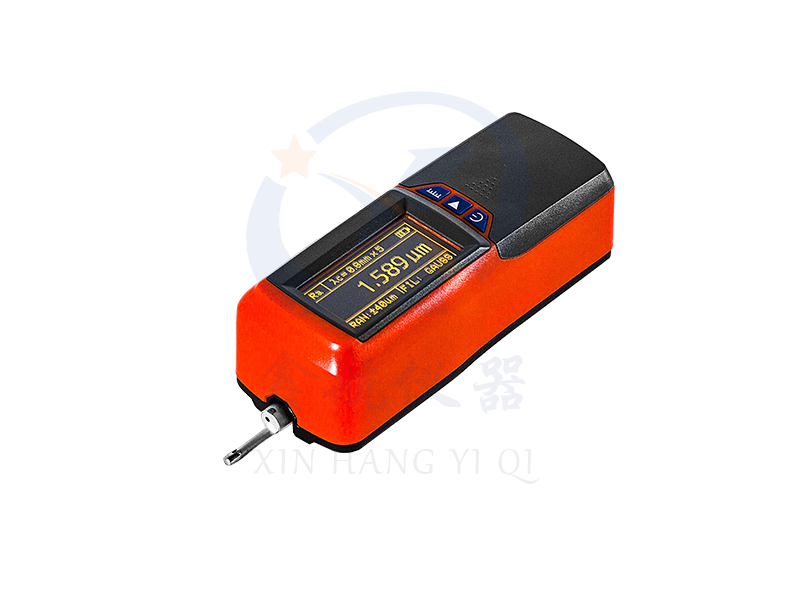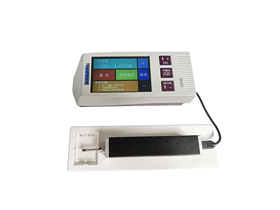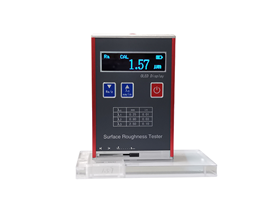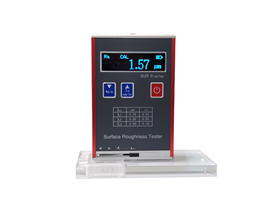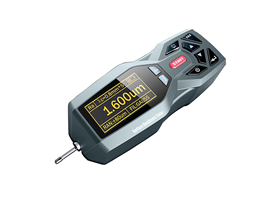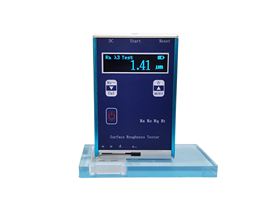summary
The portable roughness meter is a portable stylus surface roughness shape measuring instrument, suitable for testing in workshop calibration stations, laboratories, measurement rooms, and other environments. The measurement parameters comply with international standards and are compatible with the standards of some industrialized countries such as the United States, Germany, Japan, and the United Kingdom. The measurement results can be displayed digitally and graphically on the LCD display, or output to a printer.
major function
Mechatronics integrated design, small size, light weight, and convenient to use;
Using DSP chips for control and data processing, with fast speed and low power consumption;
● Large range, multi parameter Ra, Rz, Rq, Rt, Rp, Rv, R3z, R3y, RzJIS, Rsk, Rsm, Rku, Rs, RPc, Rk, Rpk, Rvk, Ry, Mr1, Mr2, Rmax
128 × 64 OLED dot matrix display, digital/graphic display; Highlight without perspective;
● Rich and intuitive display of information, capable of displaying all parameters and graphics;
Compatible with multiple national standards such as ISO, DIN, ANSI, and JIS;
● Built in lithium-ion rechargeable battery and charging control circuit, with high capacity and no memory effect;
● There is a remaining battery indicator icon that prompts users to charge in a timely manner;
● It can display the charging process indicator, and the operator can understand the charging level at any time
● Continuous working hours greater than 20 hours
● Large capacity data storage, capable of storing 100 sets of raw data and waveforms.
Real time clock setting and display, convenient for data recording and storage.
Equipped with power-saving functions such as automatic sleep and automatic shutdown
Reliable anti motor stalling circuit and software design
● Display measurement information, menu prompts, error messages, and various prompt instructions such as power on/off;
All metal shell design, sturdy, compact, portable, and highly reliable.
● Can connect to computers and printers;
It can print all parameters or any parameter set by the user.
Optional curved sensor, small hole sensor, measurement platform, sensor sheath, and extension
Applicable materials
Suitable for departments such as processing industry, manufacturing industry, testing, and commercial inspection, it is mainly suitable for on-site inspection of large workpieces and production lines, as well as external inspection by departments such as testing, measurement, and commercial inspection.
Basic Principles
When measuring the surface roughness of a workpiece, this instrument first places the sensor on the measured surface of the workpiece, and then starts the instrument for measurement. The precision driving mechanism inside the instrument drives the sensor to slide along the measured surface at a constant speed in a straight line. The sensor senses the roughness of the measured surface through the built-in sharp stylus. At this time, the roughness of the measured surface of the workpiece will cause displacement of the stylus, This displacement causes a change in the inductance of the sensor coil, resulting in an analog signal proportional to the measured surface roughness at the output end of the phase sensitive detector. After amplification and level conversion, the signal enters the data acquisition system, and the DSP chip performs digital filtering and parameter calculation on the collected data. The measurement results are displayed on the display, can also be output on a printer, and can also communicate with a PC.
sensor

|
Sensor performance indicators
|
|
Detection principle
|
Inductive
|
|
measuring range
|
one hundred and sixty μ M
|
|
Needle tip radius
|
five μ M
|
|
Needle tip material
|
diamond
|
|
Needle force measurement
|
4mN (0.4GF)
|
|
Needle angle
|
90 °
|
|
Longitudinal radius of guide head
|
45mm
|
Specification parameters
|
project
|
XH-CZ-941
|
|
measuring range
|
Z-axis
(Vertical)
|
one hundred and sixty μ M
|
|
X-axis
(Horizontal)
|
17.5mm
|
|
resolving power
|
Z-axis
(Vertical)
|
0.01 μ M/± 20 μ M
|
|
0.02 μ M/± 40 μ M
|
|
0.04 μ M/± 80 μ M
|
|
Measurement items
|
parameter
|
Ra Rz==Ry (JIS) Rq Rt==Rmax
Rp Rv R3z R3y Rz (JIS)
Rs Rsk Rku Rsm Rmr
|
|
standard
|
ISO, ANSI, DIN, JIS
|
|
graph
|
Support rate curve,
|
|
filter
|
RC, PC-RC, Gauss, D-P
|
|
Sampling length (lr)
|
0.25,0.8,2.5mm
|
|
Evaluation length (ln)
|
Ln=lr x n n=1-5
|
|
sensor
|
measuring principle
|
Displacement differential inductance
|
|
Stylus
|
Natural diamond, 90 cone angle, 5 μ M Needle tip radius
|
|
Force measurement
|
<4mN
|
|
Guide head
|
Hard alloy, sliding direction radius 40mm
|
|
Sliding speed
|
Lr=0.25, Vt=0.135mm/s
|
|
Lr=0.8, Vt=0 5mm/s
|
|
Lr=2 5. Vt=1mm/s
|
|
Return Vt=1mm/s
|
|
Indication error
|
Not greater than ± 10%
|
|
Value variability
|
No more than 6%
|
|
source
|
Built in lithium-ion rechargeable battery, charged with a DC5V, 800mA charger
|
|
External dimensions
|
141 x 55 x 40mm
|
|
weight
|
Approximately 400g
|
|
work environment
|
Temperature: -20 ℃~40 ℃; Humidity:<90% RH
|
|
Storage and transportation environment
|
Temperature: -40 ℃~60 ℃; Humidity:<90% RH
|
Measurement parameters
|
parameter
|
Display Range
|
|
Ra Rq
|
zero point zero zero five μ M~16 μ M
|
|
Rz; R3z; Ry; Rt; Rp; Rm
|
zero point zero two μ M~160 μ M
|
|
Sk
|
0~100%
|
|
S; Sm
|
1mm
|
|
TP
|
0~100%
|
Standard configuration
|
main engine
|
1 unit
|
|
Standard sensors
|
1 piece
|
|
Multi line template
|
1 piece
|
|
Sample bracket
|
1 unit
|
|
Activity bracket
|
1 set
|
|
ac adapter
|
1 unit
|
|
USB charging cable
|
1 piece
|
|
Instrument box
|
1 unit
|
|
User manual
|
1 book
|
|
Certificate of conformity
|
1 sheet
|
|
Warranty Card
|
1 sheet
|
